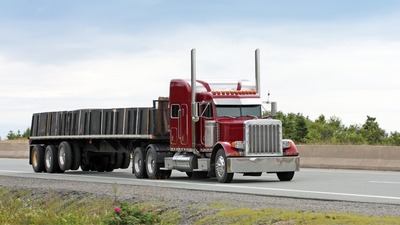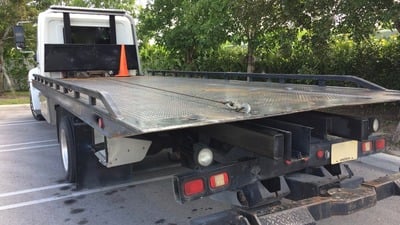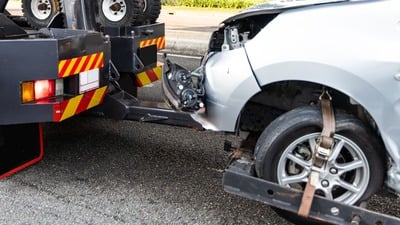Introduction to Organizing Tool Boxes
Organizing your tool box might seem like a task you can push off for another day. But let me tell you, getting your tools in order is not just about making your workbench look neat. It's about efficiency, finding the right tool fast when you need it, and not wasting minutes searching through a jumbled mess. Think about it—your time's valuable. Whether you’re a pro mechanic, a weekend DIYer, or someone who occasionally fixes a loose cabinet, your objective is the same: get in, get it done, and move on. By organizing your tools, you’re setting yourself up for a smoother run at any task. You'll know exactly where your tools are, which saves time and frustration. Plus, taking care of your tools shows respect for the craft and extends the life of your equipment. So, let's dive in and get those tool boxes organized. Trust me; future you will be thankful.
The Importance of a Well-Organized Tool Box
A cluttered tool box is a slowdown in any project, big or small. When your tools are well-organized, you know where everything is, saving you time and headaches. Imagine needing a specific screwdriver in the middle of a task only to waste precious minutes digging through a mess. That's frustrating, right? Here's the thing – an organized tool box not only speeds up your work but also protects your tools from damage. Tools thrown together can get scratched, dented, or worse, leading to unnecessary costs for replacements. Plus, knowing the exact place of each tool enhances safety. You won’t accidentally grab a sharp object or a power tool that could cause injury. In short, a well-organized tool box boosts your productivity, prolongs the life of your tools, and ensures your well-being during any job. Simple as that.
Basic Principles of Tool Box Organization
When it comes to organizing your tool box, simplicity and efficiency are key. First off, keep frequently used tools within easy reach; this means placing them at the front or on top where you can grab them quickly. Next, categorize your tools – group similar tools together. For example, keep all screwdrivers in one spot and all wrenches in another. It's also smart to use dividers or small containers within drawers for tiny items like screws, nails, and bits to prevent them from getting lost in the shuffle. A critical yet often overlooked principle is cleaning your tools before putting them back. This not only prolongs their life but also makes your next project start smoother. Lastly, label everything. Whether you use a label maker or simple masking tape and a marker, knowing exactly where everything goes saves time and frustration. Stick to these basics, and you'll turn your tool box chaos into a model of efficiency.
Types of Tool Boxes and Their Layouts
Tool boxes come in various shapes and sizes, each with its unique layout to help you keep your tools organized. Let's break it down simply. First up, hand-carry tool boxes. These are your go-to for basic tool storage. They're portable, lightweight, and perfect for those who need their tools on the go. Their layout is straightforward, with a main compartment for larger tools and smaller compartments or trays for your bits and pieces. Next, we have rolling tool chests. If you've got a ton of tools and need them all in one place, this is your best bet. They come with drawers and compartments of different sizes, making it easy to categorize tools by type or size. Plus, they're on wheels, so you can move your entire tool collection without breaking a sweat. For those who fancy a more stationary setup, top chests sit nicely on a workbench or a rolling cabinet. They're all about maximizing your vertical space with deep drawers and often include a top lid that opens for extra storage. Then there's the tool cabinets. Think of them as the big brother of rolling chests, offering even more storage and heavier-duty construction. They're ideal for professionals or anyone with a significant tool collection. The layout is designed with efficiency in mind, allowing for tools to be separated and organized in a way that makes sense for the user.Finally, we see tool bags and belts in action primarily for specific jobs or lighter tasks. They're flexible, easy to carry, and keep the essential tools close at hand. Their open layout means you can grab what you need without rummaging around. Each type of tool box serves a different purpose, and choosing the right one depends on your needs, the amount of tools you have, and how mobile you need to be. Matching the right type and layout with your workflow can seriously boost your efficiency.
Essential Tools Every Box Should Contain
Every tool box needs a solid base of tools to tackle the job, big or small. Here's the rundown: First, don't go without a hammer. It's a must-have for driving nails or breaking things apart. Next up, screwdrivers. Get a range, both flathead and Phillips, for all those screws you'll meet. Pliers, including needle nose and slip-joint, are your best friends for gripping and pulling. Don't forget wrenches—an adjustable one can handle many sizes. A tape measure is key for precise work, and a utility knife cuts through the tough stuff. For quick fixes and assembly, a set of Allen wrenches is incredibly handy. And last, but not least, a flashlight or headlamp, because you can't fix what you can't see. This kit will have you ready to face most challenges head-on.
Customizing Your Tool Box for Specific Projects
When tackling different projects, not all tools are created equal. That means customizing your tool box for specific projects can save you loads of time and prevent unnecessary frustration. Start by figuring out what tools you'll use the most for the project at hand. These should be the easiest to reach. If you're working on a car, for example, make sure wrenches and sockets take center stage. For a woodworking project, prioritize your hammers, saws, and measuring tape. Consider using modular tool organizers. These nifty gadgets let you change your tool box layout on the fly, perfect for those constantly shifting from one type of project to another. Also, label everything. Yes, it might seem a bit over the top, but labeling drawers or sections of your toolbox can be a game changer, especially when you're in the middle of a complex job and need to find something quickly. Lastly, review and tweak your setup after each project. What worked well? What didn't? Continuous improvement will make your tool box more efficient over time. Customizing your tool box isn't just about making things look neat; it's about crafting a personal workflow that lets you work smarter, not harder.
Organizing Strategies: From Foam Inserts to Magnetic Liners
To keep your tools in place and make them easy to find, think about customizing your tool box. Start with foam inserts. They come in sheets that you can cut to fit each drawer in your tool box. This way, you can create specific spots for each tool. The foam not only keeps tools from moving around but also protects them from damage. If you prefer a quicker solution, try magnetic liners. You just lay them in your drawers, and your tools will stick to them. Plus, these liners make it simple to see all your tools at once. Both methods help you avoid the frustrating scramble for the right tool, making your projects smoother and more enjoyable.
Advanced Tips and Tricks for Maximum Efficiency
To crank up your tool box efficiency, think about these savvy strategies. First off, group tools by their type or job. This means keeping all your wrenches in one spot, screwdrivers in another. Simple, but it makes finding what you need a breeze. Next, embrace the magic of drawer dividers or small containers. These gems are game-changers for keeping small parts from becoming a jumbled mess. Think nuts, bolts, and washers all neatly sorted. Then, consider labeling. A simple label on each drawer or container means no more guessing where everything is. Whether you use printed labels, handwritten tags, or even color-coding, it’s all about making identification quick and effortless. Also, don’t underestimate the power of a pegboard. Hang one above your tool box. It’s perfect for items you grab often. Tools hang in clear view and are easy to access. Plus, it frees up drawer space for other stuff. Finally, routine clean-outs are crucial. Once in a while, take everything out. Clean your toolbox, get rid of tools you don’t use, or replace old ones. This keeps your setup lean and mean, focused only on what you truly need. By tailoring these tips to fit your workshop, you’ll sharpen your efficiency. No more wasted time searching for tools, which means more time getting the actual work done.
Conclusion: Streamlining Your Workflow with Organized Tool Boxes
In wrapping up, it's clear that having an organized tool box isn't just about keeping your tools tidy; it's about streamlining your workflow and boosting your efficiency. When you know exactly where each tool is, you waste less time searching and more time doing. Think of it as setting yourself up for success, every single time you reach for that tool box. Whether you’re a professional mechanic or a DIY enthusiast, the principles remain the same: categorize, label, and prioritize your tools. Embrace the simplicity of knowing that everything has its place, and watch how this simple change can lead to big improvements in your projects. Remember, an organized tool box is a gateway to a more efficient and productive working environment. So, take the time to get it right, and you’ll thank yourself later.





